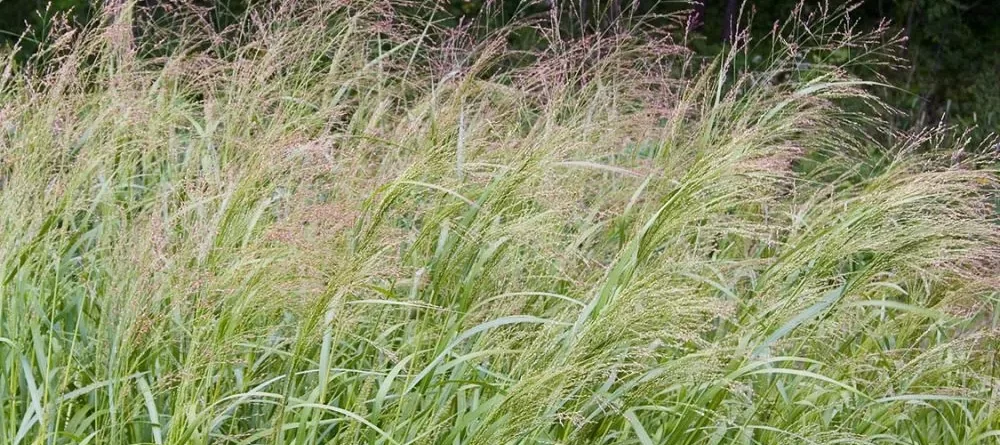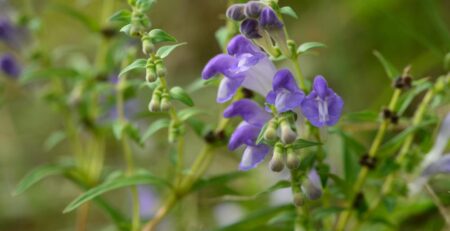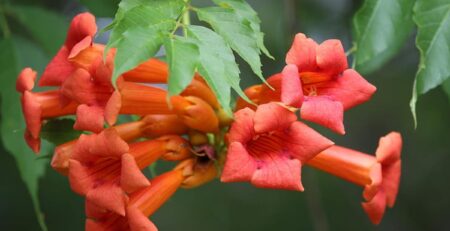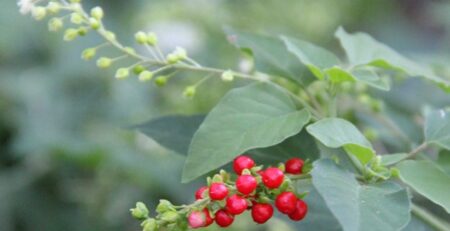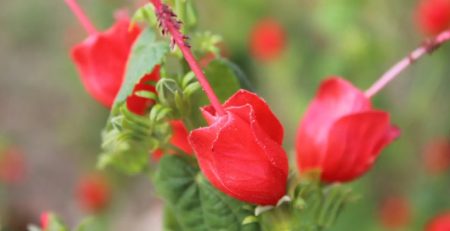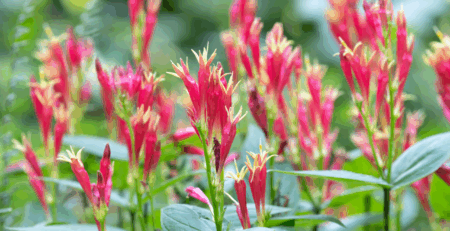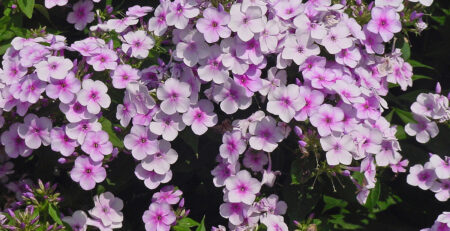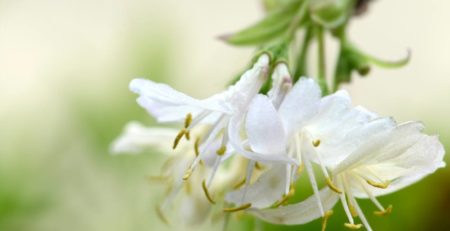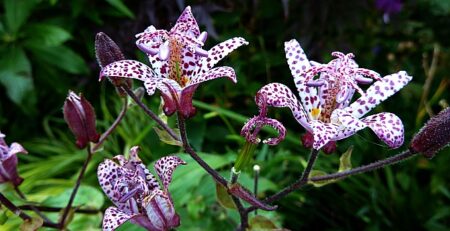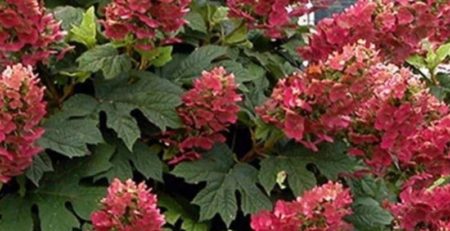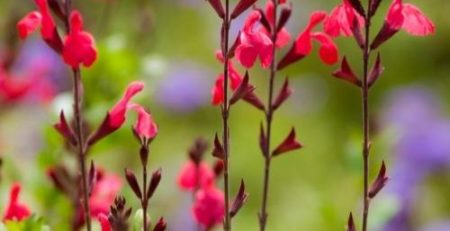Panicum virgatum, Switchgrass
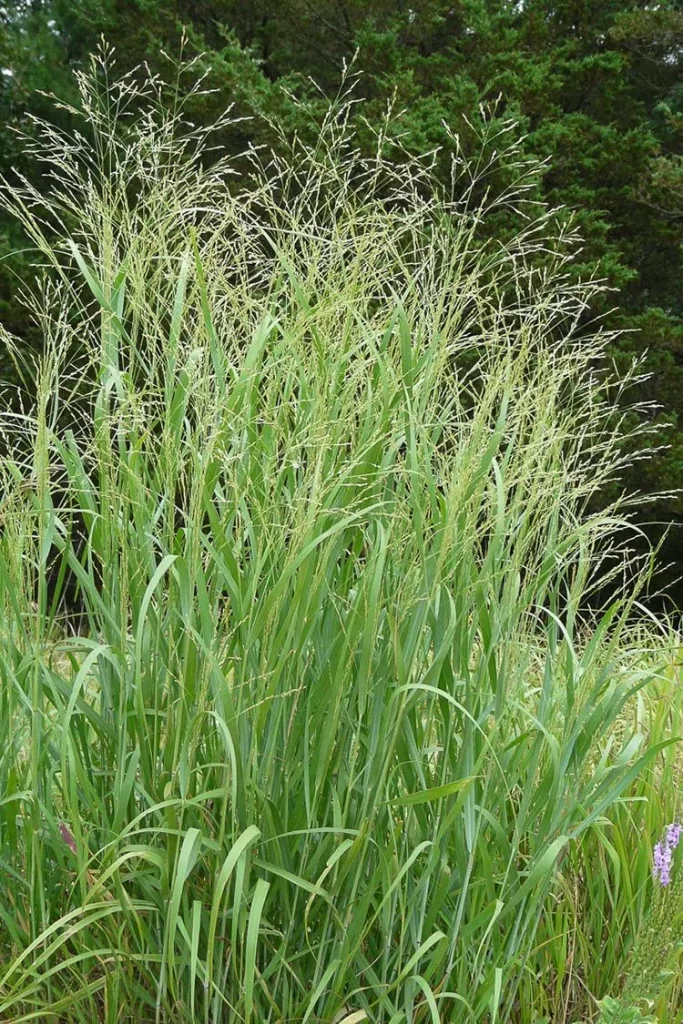
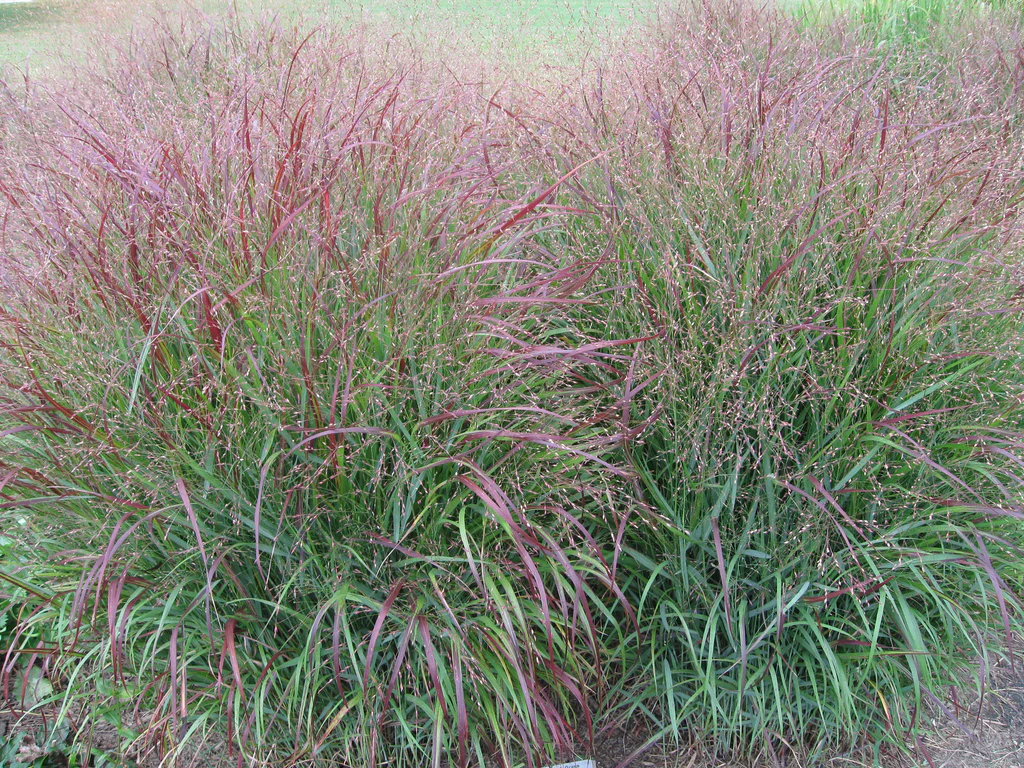
Botanical Name: Panicum virgatum
Common Name: Switchgrass
Synonyms:
Category: Grass (Ornamental)
Family: Poaceae
Lifecycle: Perennial
Lifecycle (Alt):
USDA Symbol: PANVI
Hardiness Zone North: 4A
Hardiness Zone South: 9B
Sun Requirement: Full Sun (6+ hours of sunlight)
Sun Requirement (Alt): High Sun (4-6 hours of sunlight)
Water Requirement: Low
Growth Rate: Medium
Maintenance: Low
Plant Adult Height: 3-6ft
Plant Adult Spread: 2-3ft
Plant Spacing: 1-2ft
Soil Preference: Adaptable
Soil pH Preference: Adaptable
Propagation: Division, Seed
Attracts: Birds
Resists: Disease, Fire
Tolerates: Freeze, Drought, Erosion, Clay Soil, Dry Soil, Heat, Salt
Miscellaneous: Tolerates Poor Soil, Native Plant, Wildflower
Description: Switchgrass (Panicum virgatum), considered one of the “big four” grasses of the native prairie, along with Big Bluestem, Little Bluestem, and Indiangrass, is a perennial warm season grass, growing 4-6′ in bunches, but can also be used to form a sod. Switchgrass is an important prairie grass and beautiful addition to any landscape wanting a changing color pallet from Spring to Winter. The leaf blades are flat up to ½ inches wide and 6-23 inches long, with an overall bright color of bluish to bluish-green in the growing season and changing to reddish purple, orange or a bright yellow in fall and winter. The seed head is an open pyramid shaped panicle (a loose branching cluster of flowers) which can be deep red or purple. This panicle will last through fall and is where you will find the glossy red seeds. Switchgrass has strong upright stems, helping give it the airy, hazy, cloud like appearance throughout the seasons. Switchgrass has incredible versatility and hardiness, growing well in zones 4 to 9. Switchgrass tolerates saltiness both clay and sandy soils and short periods of drought but will grow to its taller height in fertile moist clay soil, requiring full sun to part shade. A small Switchgrass plant is a wonderful addition for a container garden as the thrill component. If used in a container, make sure the pot is large enough to accommodate the roots, and monitor for adequate moisture. The container grass can be transitioned into the ground and used like all varieties of Switchgrass, as meadow plantings, added to naturalized landscape, pocket prairies, or a wildlife habitat. Switchgrass may be planted 1 foot apart and allowed to merge for a loose and flowing privacy border or screen. Switchgrass has a long taproot and deep strong roots that are beneficial in helping stabilize creeks and floodplains. Because of these roots, that can grow to 10 feet, switchgrass is extremely hardy, withstanding severe weather and fire. Besides providing food for birds, shelter to wildlife, Switchgrass is a larval host for the Delaware Skipper (Anatrytone logan) and Dotted Skipper (Hesperia attalus) Switchgrass was important to native peoples in the Americas. They used the ground seeds to make flour, mixing the ground roots with soapweed to wash hair, used it to stuff into moccasins as padding, and made teas of the blades for fevers. Today in the U.S. Switchgrass is used as a biofuel, in our landscapes and as livestock feed.
Propagation & Planting: Switchgrass can be propagated by seeds or division. For seed propagation, collect mature seeds in late fall or early winter and store them in a cool, dry location. Prior to sowing in spring, cold stratify the seeds in moist sand at temperatures between 1°C and 5°C for one to two months to enhance germination. Sow the stratified seeds in well-draining seed starting mix, lightly covering them with soil. Maintain consistent moisture and provide ample light until seedlings establish. For vegetative propagation through division, perform this during early spring or fall. Carefully dig up an established clump of Switchgrass, ensuring a substantial root ball is intact. Use a sharp knife or spade to divide the clump into smaller sections, each with a part of the crown and adequate roots. Replant the divisions either in pots or in a nursery bed until established, ensuring they are kept moist.
When planting Switchgrass, choose a site with full sun exposure and well-draining soil. Planting is best done in spring or early fall to allow the roots to establish before extreme temperatures. Dig a hole twice the width of the root system and just as deep as the root ball. Place the plant in the hole so that the base of the stem is level with the soil surface. Backfill the hole with the native soil mixed with compost to aid in water retention and root growth. Water the plant thoroughly after planting to settle the soil around the roots and eliminate air pockets. Maintain soil moisture until the plant is well-established.
Plant Care: Switchgrass thrives in full sun and well-drained soil but is adaptable to a variety of soil types, even those that are poor or sandy. This grass requires minimal care once established. Watering should be moderate to establish young plants, generally continuing until they show signs of new growth and seem well rooted. Thereafter, Switchgrass is highly drought-tolerant and needs only occasional watering during extremely dry periods. No fertilization is generally necessary; however, an application of a balanced fertilizer can be used in spring if growth appears sluggish or if grown in very poor soil. When it comes to pest and disease issues, Switchgrass is relatively resistant but should be monitored periodically for signs of trouble. To maintain a neat appearance and promote vigorous growth, cut back the plant to about 4 inches above ground in late winter before new shoots appear. This annual pruning will help rejuvenate the plant and maintain its vitality. In terms of propagation, Switchgrass can be easily divided in early spring every few years to manage its spread and maintain its health.
Fertilize: No fertilizing needed
Prune: Switchgrass should be pruned in late winter or early spring, before new growth begins. This timing prevents the premature removal of foliage which provides visual interest and protection during the winter months. Pruning should not be conducted during the fall or mid-winter, as this can stimulate new growth that will be susceptible to frost damage and inhibit the plant’s natural cycle. When pruning, cut back the entire clump of grass to about 4 to 6 inches above ground level using sharp, clean shears. This will help encourage vibrant new growth and maintain an attractive shape. Ensure that all cuts are clean and avoid jagged cuts which can lead to disease entry. Regular pruning also helps maintain plant health by removing dead or damaged foliage, promoting air circulation, and reducing the risk of pest infestations.
Pest & Disease: Switchgrass is susceptible to a few pests and diseases, which can hinder its health and productivity. Rust, caused by the fungus *Puccinia emaculata*, presents as orange or yellowish spots on the leaves and stems, and can be managed by applying fungicide early in the season and removing infected plant material. Another disease, leaf spot, characterized by brown spots bordered by a yellow halo, can be controlled by ensuring good air circulation around the plants and applying fungicides when necessary. Switchgrass can also be attacked by chinch bugs and grasshoppers. Chinch bugs can be controlled by regular watering and using insecticidal soaps or pyrethrins. For grasshoppers, baiting early in the season or using appropriate insecticides can be effective. Regularly inspecting plants for signs of these pests and diseases is crucial for maintaining the health of Switchgrass. Additionally, implementing good cultural practices such as proper spacing and avoiding overhead watering can help prevent the onset of these issues and promote a thriving Switchgrass stand.
Plant of the Month content is owned by, and used with authorization from, PlantTAGG, Inc., with curation and oversight by the DCMG ‘At Home Botanist’ team. © PlantTAGG, Inc. All rights reserved.

